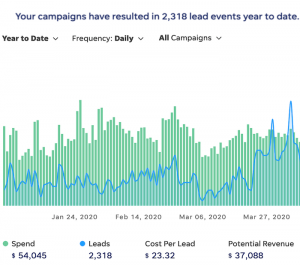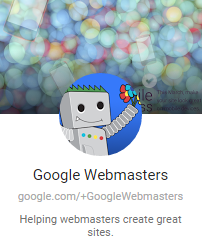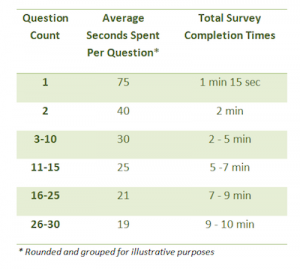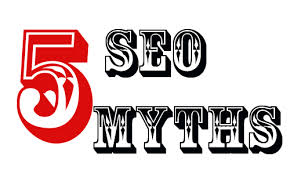— February 4, 2018
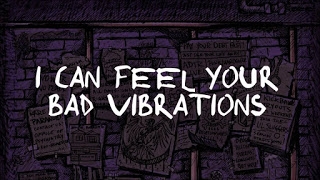
Have you ever been around a person for a bit or walked into a room and said, “Boy I just feel some bad vibes.”
Or, you spend time with someone and walk away thinking, “I feel so good when I’m around them.” They have such a good vibe.
The word “vibe” has been around for quite some time. Harken back to the early sixties and you can still hear echoes of the Beach Boys’ song…”I’m picking up good vibrations”.
The Beach Boys’ read regarding human interaction is really quite scientific (…of course I don’t know if they really knew this!) and is also what we need in leadership today!
Vibe is a shorten representation of the word vibration.
And though you may not see them, you can feel them — vibrations do exist. If you’ve never used it or heard of it, here is how it is defined in the urban dictionary:
(Noun) A distinctive emotional atmosphere; sensed intuitively; feeling, atmosphere, aura
Though vibe seems to be derived from and seen as the language of the 60’s era, little did we know back then how scientific that word was and how a lot of social lingo or slang we use, even today, is grounded in that science…”feelin’ me?” (emotional intelligence).
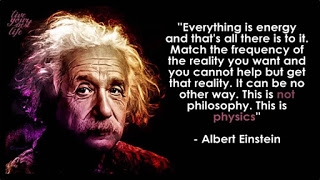
Though you may not use vibe as a part of your everyday lingo, it is inescapably built into our human existence and impacts every element of who we are and what we do.
By the way, leaders have a vibe. A company brand has a vibe.
Vibe represents energy and we experience the qualities of that energy whenever we interact.
There is a universal energy that connects us all and which we experience whether we’re aware of it or not. We are interconnected to a variety of energy elements within our universe.
So, for starters, there is an individual vibe, which in metaphysical terms could be considered an individual’s spirit or essence of who they are. It is the source that dictates how we interact with others and also contributes to the collective vibe of a group.
“…there is a fortuitous connection between the physiology of consciousness, the function of the nervous system and the physics of the universe.” David Hawkins, Power vs. Force
Side note: Another word familiar to many to describe vibe is chemistry.
Here’s the cool thing, published science surrounding the idea of “vibe” or chemistry has finally become more mainstream and intersected with what we’ve been intuiting as humans for quite some time.
Here are two examples:
> The discovery of mirror neurons in the brain that detect smiles and laughter and causes a similar response. (You can read more about this in the article Social Intelligence and the Biology of Leadership).
> The energy level of certain human qualities calibrated though muscle testing in the work done by David Hawkins, Power vs. Force.
In essence, we have and experience unseen connections with one another that can greatly influence every aspect of ourselves and that can be used to assess how teams work, how leaders impact followers and ultimately a company’s results.
So, let’s think about leadership for a moment. We can safely say and it has been proven scientifically that a leader’s vibe affects their followers in very distinct ways. It means that how a leader relates can reach and impact positively or negatively the core essence or spirt of a person they lead, i.e. their vibe. The impact of their vibe on someone else’s directly translates into a certain level of motivation and how that person will act or respond in their surroundings. (I believe this where personality conflicts can arise or “not clicking” with someone for no known, logical reason.)
Think about that for a moment.
This is quite powerful!
It also holds good news and potentially bad news.
Now here’s the point, though studies have been conducted and new science revealed, I’ve been seeing this for all the years I’ve been in the business of human performance in the workplace, (I’m in my 20th year)….and all the years before that in my working life. And…I bet you have too!
Honestly, we don’t need a plethora of studies and science to tell us what we see and experience every day regarding a boss, leader, or manager’s impact on team members. However, for those who seem to resist these truths, they (the studies and science) do come in handy to share.
So, when helping leaders become more effective, helping business owners build companies that can consistently thrive, their ability to know, see and understand how they affect the very essence of those they lead is critical. We call that their Human Quotient (tm).
Leaders need to expand their EQ to their HQ.
Why? Because ultimately, this is THE Source of an employee’s motivation to participate and perform, (or, I have to use this word though I don’t want to) …or be engaged.
This is where it all begins, the source becomes the force of the fountain. This is the true essence of a company’s “human resource”.
So we can firmly say, an employee’s spirit or essence is the ultimate human resource, from which everything else flows.
Very important point > so… how a leader touches, reaches, impacts this will influence everything else regarding how that employee behaves and contributes.
An employee’s essence or spirit is expressed through, gives life to, their heart, mind and physical actions. How they are treated can deeply impact that. It is the lifeblood of their humanity.
And so, consider this, if an employee is treated “inhumanely”, it could diminish the very essence of who they are and what they have and are willing to give…unless they are strong enough and aware enough to respond in strength, successfully managing the adverse impact of those actions.
To be able to do this takes strong character and personal maturity. Many employees can manage even the subtlest of inhuman treatment…though it takes a rare person to do so for an extended period of time. That’s why if someone has a bully boss and there is little hope of change, I advise them to leave.
Equally, for as many employees that can adequately handle a broad range of inhuman behavior, please know there are many more who can’t. And so…
Disregarding someone’s spirit – treating someone inhumanely from a tiny act to significant is a talent killer!
If this is not acknowledged and really taken to heart in leadership and HR, you can throw any discussion about employee engagement out the window. It’s like asking a car to travel without gas. Many leaders and managers relate in a way that adds zero gas and yet expects that car to keep on driving!
Here’s my observation:
Many leaders expect, mostly on a subconscious level, their employees, in the midst of inhuman treatment, to be superhuman.
Effective leadership is knowing what you’re working with to get the best results. Yet few leaders really know how to work with the core elements of their “human resource” and therefore allow a broad range of inhuman treatment with little regard or awareness of its impact.
A lot of the challenges in leading could and should be addressed in this way. It would also diminish many “employee problems”.
It’s time we as a leadership and business owner community learned. We are becoming a more conscious society regarding how folks are treated in the workplace, particularly due to the surge in sexual harassment claims. These steady flow of revelations are also nurturing more social conscience about how we treat others. Simply put… are we aware and do we care? (Great example of this, at the time of this writing, the Women’s Gymnastic Team and Michigan State Athletics.
Leaders can be either drains or fountains.
“They can either nourish you and help you grow as a person or they can stunt your growth and make you wilt and die.” – Plato
When working with leaders and business owners to help them build positive, empowered work cultures that produce operational effectiveness…this is what we look at and learn about. We go to the essence of what it means to be human first, before we attach a leadership title and then teach them exactly, and practically how to positively work with all aspects of the human element.
They have been blown away by the insights to their leadership challenges by understanding the role of human behavior and looking at performance and operational outcomes through the lens of these core human elements: mind, body, and spirit.
Consider These Coaching Questions
So…
> How is your vibe as a leader (your vibe reflects and communicates who you really are…whether you’re aware or not)?
> How would other describe your vibe when they experience you?
> What does your vibe activate in others? Is it a fountain or a drain?.. positive behaviors or negative, constructive or destructive, productive or counterproductive?
> Does your leadership positively enliven and even amplify the heart, mind and spirit of each of your employees?
> How is the vibe of your team?
> Do you have any toxic vibes on your team? (This is very destructive, take it seriously!)
> How is the spirit of your team? (This article gives new meaning to the phrase “team spirit” and “team chemistry”.)
> Does your leadership and team have a vibe that generates high energy qualities? (High energy qualities generate motivation, creativity, synergy, effective collaboration, work satisfaction connection, voluntary participation and contribution…to name a few).
Please know, the answers to these questions have a direct impact on your P/L. Believe me!
You can learn how through our latest executive briefing, Show Me The Money!
And for those who still think this is all too whoo whoo, start here => read the recommended article from the Harvard Business Review – Social Intelligence and the Biology of Leadership.
Is it time for your leaders and company culture to become “more human”. Let us help. See contact info. below. Trust me when I say, leadership development with me and my team is unforgettable and transformational. We don’t put band-aids on your challenges like a traditional training approach, we do the required surgery — we go to and deal with the core.
Business & Finance Articles on Business 2 Community
(68)
Report Post